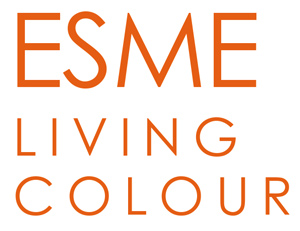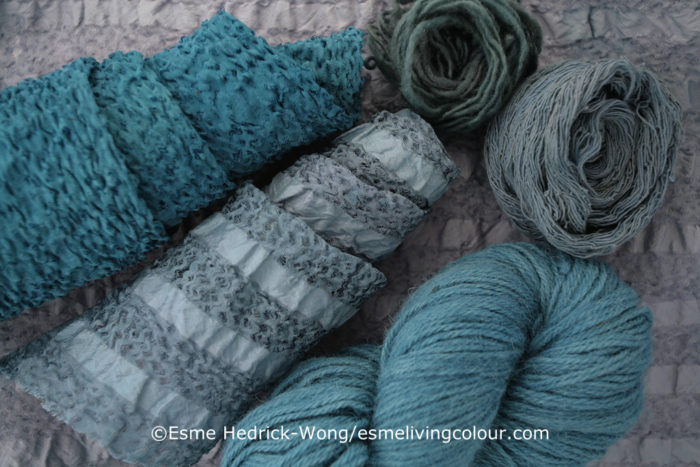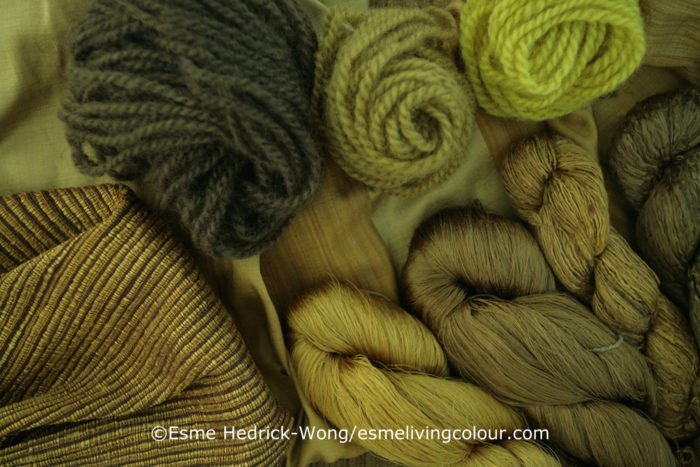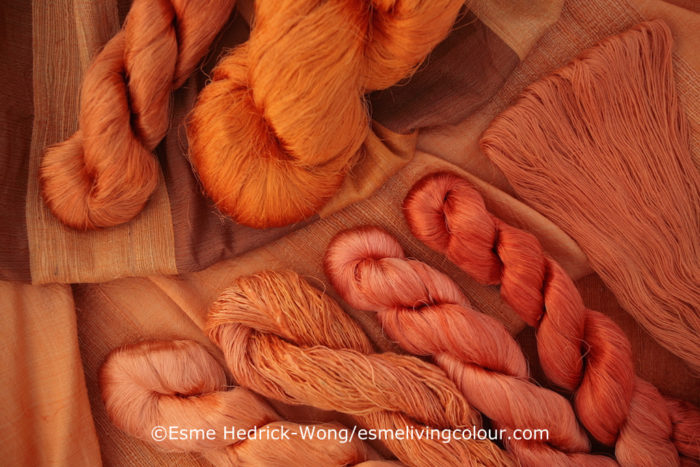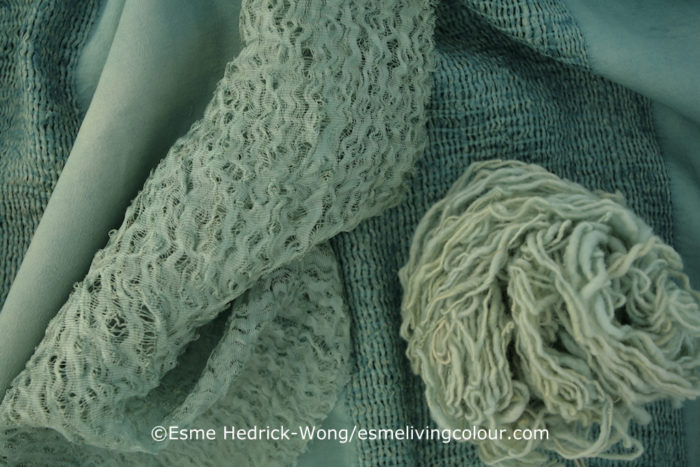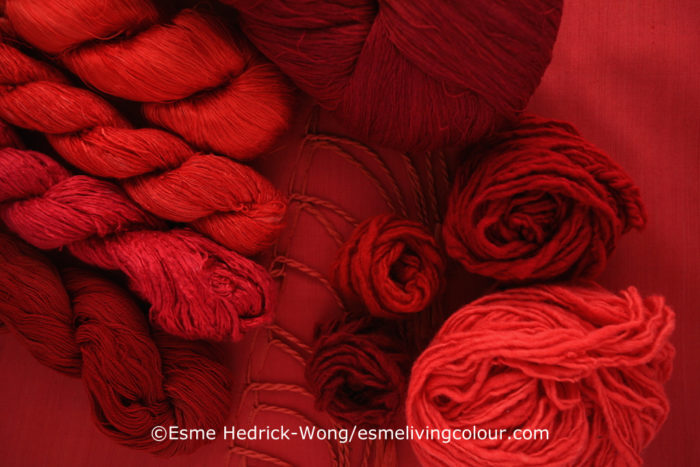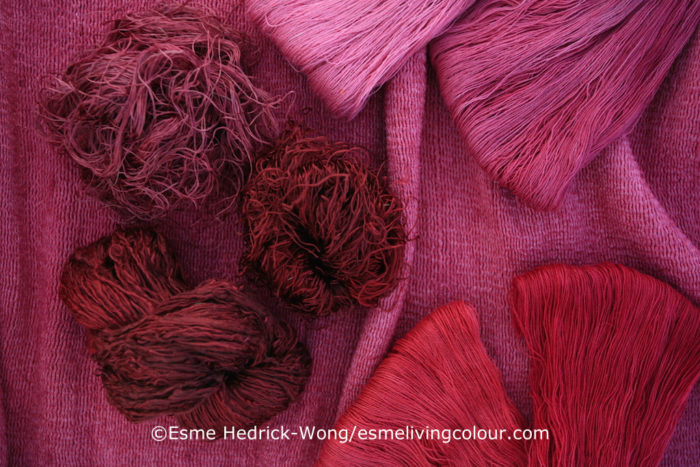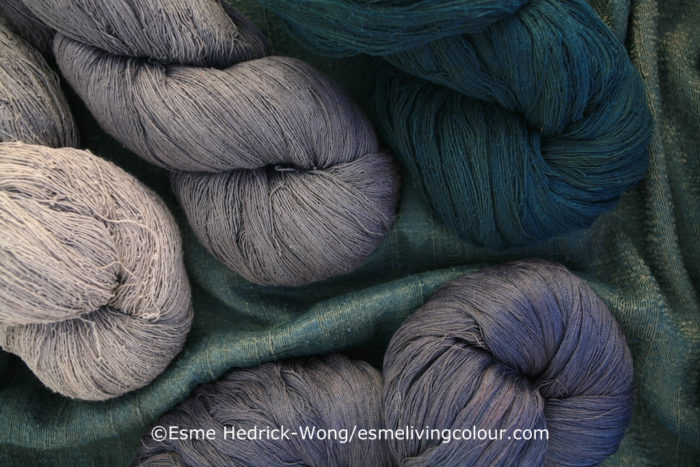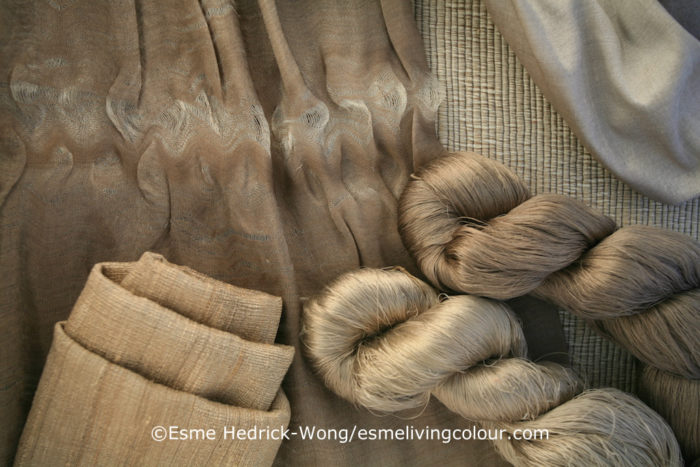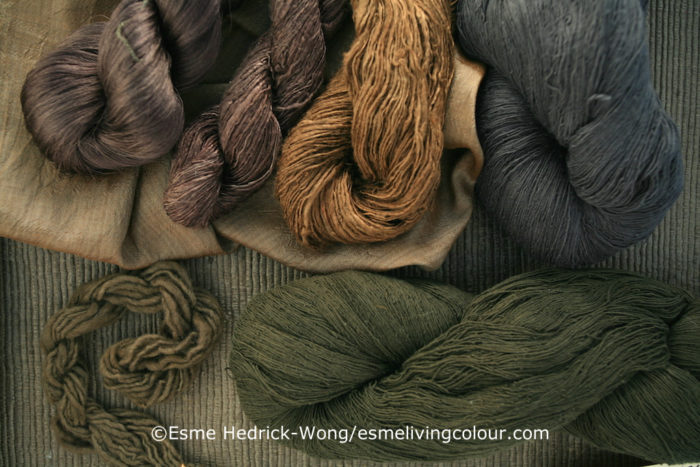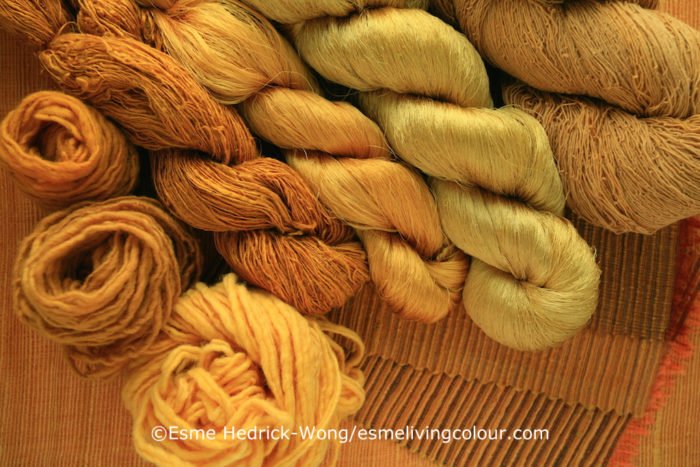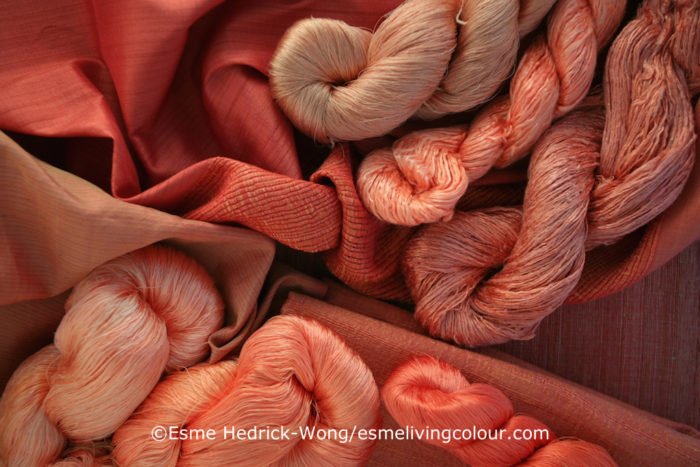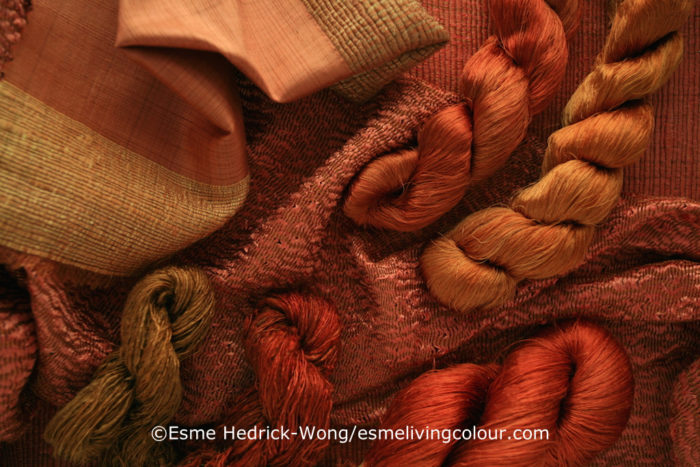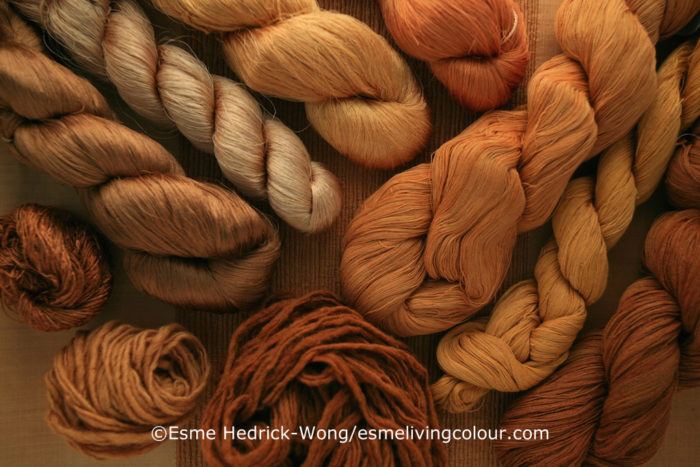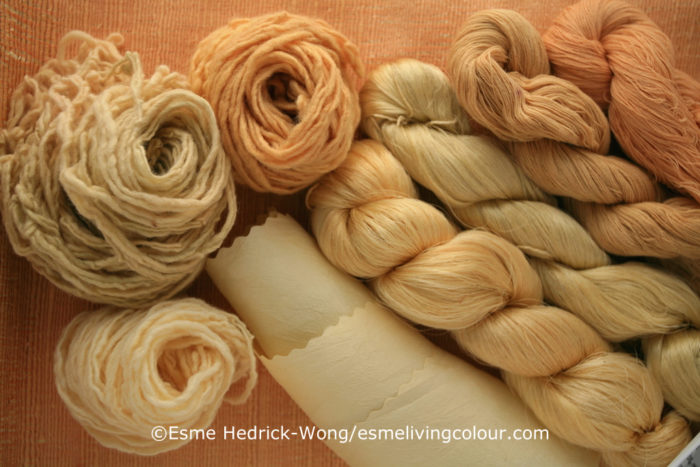COLOURS
I find the search for multi-hued organic colours endlessly fascinating. A visit to the grocery shop to buy food for dinner often turns into a hunt for a new dye colour. A walk in a park gets me wondering about the different trees I’m passing and what colours their leaves might possibly produce. Interestingly, what seems to be the most obvious sources, have little or no dye pigment, carrot juice being a good example; it’s intensely orange but only produces a disappointing pastel yellow on wool or silk yarns. Summer berries oozing deep ruby reds or bluish purples can stain your favourite shirt but then fade to a dull grey after a single wash. Onion skins are commonly used by dyers to produce rich gold-yellows, orange and olive green but these colours also quickly fade in the sun. In contrast my choice vegetable dye comes from dried avocado skins. These skins produce a range of pink and orange terra cotta as well as deep chocolate browns and each of these colours remained stable after undergoing tests for light and wash fastness.
An added challenge is to create colourfast recipes. It’s always disappointing to produce a beautiful colour only to find that it quickly fades or washes away. But, as I have found out, it can be done. This challenge of creating new dye recipes that are colourfast continues; it is exciting and inspiring each time a new colour emerges from the dye bath; and a joy when it proves to be colourfast! Over the years I’ve also discovered that many of the dye colours I’ve developed actually deepen after long exposure to sunlight. A combination of precise experimentation, traditional knowledge, creative insights and serendipitous discoveries continually adds to the enjoyment of making natural dyes.
These photos show just a few of the many colours I have developed over the years.
- Pastel, Ultramarine & Prussian Blue
- Turquoise & Grey Blue
- Khaki, Sage & Pea Green
- Salmon & Orange
- Sea Green
- Purple & Plum
- Raspberry & Pastel Pink
- Poppy & Ruby Red
- Burgundy & Violet
- Dove Grey & Blue Black
- Smoke & Silver
- Plum, Bronze, Slate & Dark Grey
- Golden Yellows
- Chocolate & Dark Brown
- Pink, Beige & Pink
- Terra Cotta & Mahogany
- Copper
- Mocha & Camel
- Cream & Sand
- Ivory & Stone
